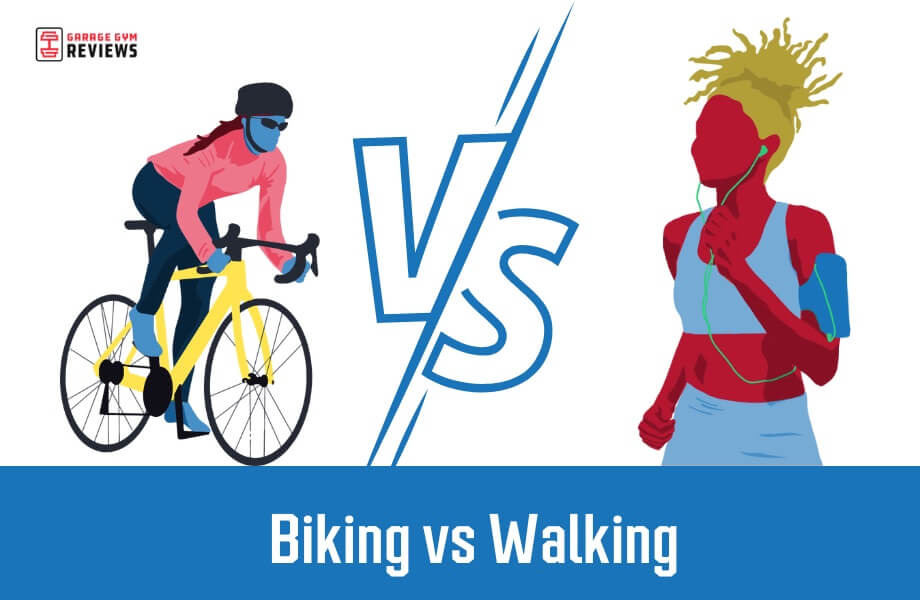Introduction: Understanding the Importance of Choosing the Right Exercise
Selecting the most suitable exercise for one’s fitness goals and lifestyle is a crucial step in embarking on a successful fitness journey. With a plethora of exercise options available, it is essential to compare the advantages and disadvantages of each activity to determine which one is the best fit. In this analysis, we will focus on two popular exercises: cycling and walking. Both activities have garnered significant attention due to their accessibility and numerous health benefits. By examining various aspects of both exercises, we aim to provide a clear answer to the question: “Is cycling better than walking?”
Health Benefits of Cycling: A Comprehensive Overview
Cycling is a popular form of exercise that offers numerous health benefits, making it an attractive option for many individuals. By incorporating cycling into one’s fitness routine, it is possible to experience improved cardiovascular health, increased muscle strength, and enhanced mental well-being. Specific cycling-related products, such as heart rate monitors and power meters, can further optimize the exercise experience and track progress towards fitness goals.
Improved cardiovascular health is one of the most significant benefits of regular cycling. This low-impact aerobic activity strengthens the heart, reduces blood pressure, and improves circulation. As a result, cyclists often experience a reduced risk of heart disease and stroke, making cycling an excellent option for those seeking to improve their cardiovascular fitness.
In addition to enhancing cardiovascular health, cycling also builds muscle strength. The pedaling motion targets the lower body muscles, including the quadriceps, hamstrings, glutes, and calves. Regular cycling can lead to increased muscle tone and definition in these areas, contributing to a stronger, more balanced physique. Furthermore, cycling engages the core muscles, which help maintain stability and posture during the ride. A stronger core can translate to better performance in other physical activities and daily tasks.
Cycling also offers mental health benefits, as it has been shown to reduce stress, anxiety, and depression. The combination of physical activity, fresh air, and scenic views can elevate one’s mood and promote a sense of well-being. Moreover, cycling can serve as a form of meditation, allowing riders to clear their minds and focus on the present moment. By incorporating cycling into a regular exercise routine, individuals can experience enhanced mental clarity and overall well-being.
Health Benefits of Walking: A Deep Dive into the Perks of Pedestrianism
Walking is a simple, accessible, and convenient form of exercise that offers numerous health benefits. Regular walking can lead to a reduced risk of chronic diseases, improved bone density, and better sleep quality. As a low-impact activity, walking is suitable for individuals of all fitness levels and ages, making it an ideal exercise option for those looking to maintain or improve their overall health.
One of the primary health benefits of walking is the reduced risk of chronic diseases. Regular walking has been shown to lower the risk of heart disease, stroke, diabetes, and certain types of cancer. By incorporating walking into a daily routine, individuals can take a proactive approach to preventing these potentially life-threatening conditions.
Walking also plays a crucial role in maintaining and improving bone density. As we age, our bones naturally become weaker and more brittle, increasing the risk of fractures and osteoporosis. Regular weight-bearing exercises, such as walking, can help slow down this process by stimulating bone growth and maintenance. This is particularly important for women, who are at a higher risk of osteoporosis due to hormonal changes during menopause.
Another significant benefit of walking is its positive impact on sleep quality. Engaging in regular physical activity, including walking, can help regulate sleep patterns and improve the overall quality of sleep. Adequate sleep is essential for maintaining optimal physical and mental health, making walking an excellent option for those seeking to enhance their sleep habits.
Lastly, walking requires minimal equipment, making it an accessible and convenient form of exercise. A sturdy pair of shoes is often all that is needed to get started. This simplicity, combined with the numerous health benefits, makes walking an attractive option for individuals looking to incorporate exercise into their daily lives.
Comparing Caloric Expenditure: Which Activity Burns More Calories?
When considering the question “is cycling better than walking” from a caloric expenditure standpoint, it is essential to analyze both activities’ intensity, duration, and body weight. While walking is generally considered a lower-intensity exercise than cycling, the number of calories burned during each activity can vary depending on several factors.
Intensity plays a significant role in determining the number of calories burned during exercise. Cycling, especially at higher intensities, can burn more calories than walking due to the increased effort required to propel the bike forward. Factors that influence cycling intensity include resistance, speed, and terrain. By increasing these variables, cyclists can significantly boost their caloric expenditure during a ride.
Duration is another critical factor in comparing the caloric expenditure of cycling and walking. Generally, the longer an individual engages in either activity, the more calories they will burn. However, due to the potentially faster pace of cycling, individuals may be able to cover greater distances in the same amount of time, leading to a higher overall caloric burn.
Lastly, body weight impacts the number of calories burned during both activities. Individuals with a higher body weight typically burn more calories during exercise, as their bodies require more energy to move. However, it is essential to note that the rate of caloric expenditure may differ between cycling and walking, depending on the intensity and duration of each activity.
In conclusion, while walking is a lower-intensity exercise than cycling, the number of calories burned during each activity can vary significantly depending on intensity, duration, and body weight. In many cases, cycling may burn more calories than walking due to the increased effort required. However, it is essential to consider individual fitness levels, goals, and preferences when determining which activity is best for burning calories and improving overall health.
Assessing Time Efficiency: Is Cycling a Faster Way to Fitness than Walking?
When evaluating the time efficiency of cycling versus walking, it is crucial to consider factors such as distance covered, terrain, and personal fitness levels. Both exercises offer unique advantages and disadvantages, making it essential to tailor an exercise routine to individual preferences and goals.
Distance covered is a significant factor in determining time efficiency. Cycling generally allows individuals to cover greater distances in less time due to its faster pace compared to walking. This is especially true for cyclists using specialized bikes designed for speed or those utilizing electric-assist bicycles. However, it is essential to note that walking can still be an effective exercise for improving fitness and overall health, even if the distance covered is not as great.
Terrain also plays a role in the time efficiency of both exercises. Cycling on flat, smooth surfaces is typically faster than walking, while walking on hilly or uneven terrain can be slower than cycling on similar surfaces. Adjusting the terrain of an exercise routine can help keep workouts interesting and challenging, regardless of the chosen activity.
Lastly, personal fitness levels significantly impact time efficiency. Individuals with higher fitness levels may find that they can cover greater distances in less time, regardless of whether they choose to cycle or walk. However, it is essential to remember that starting at a lower fitness level does not preclude the possibility of improvement. Both cycling and walking can be excellent exercises for beginners looking to improve their fitness and overall health.
In conclusion, when considering the question “is cycling better than walking” from a time efficiency standpoint, it is crucial to evaluate factors such as distance covered, terrain, and personal fitness levels. While cycling may allow individuals to cover greater distances in less time, walking remains a viable exercise option for improving fitness and overall health. Ultimately, the most time-efficient exercise is the one that an individual enjoys and can sustainably incorporate into their lifestyle.
The Role of Equipment: How Bicycles Impact the Cycling Experience
While walking requires minimal equipment, cycling involves various components that can significantly impact the overall experience. Understanding the role of bicycles and related equipment is essential when comparing cycling to walking as exercise options.
Bicycles are the primary piece of equipment required for cycling. They come in various styles, each designed for specific purposes, such as road bikes for speed and mountain bikes for off-road terrain. The choice of bicycle can greatly influence the cycling experience, as each type offers unique advantages and disadvantages. For example, road bikes are typically lightweight and efficient, making them ideal for long-distance rides, while mountain bikes provide better traction and stability on uneven surfaces.
In addition to the bicycle itself, there are several other pieces of equipment that cyclists may consider. Helmets are crucial for safety, protecting the head in the event of a fall or collision. Cycling shoes, which often feature clipless pedal systems, can improve power transfer and efficiency during rides. Lastly, cycling computers and GPS devices can help track progress, monitor performance, and navigate unfamiliar routes.
Comparatively, walking requires minimal equipment. Comfortable shoes, clothing suitable for the weather, and, if necessary, a supportive backpack or waist pack for carrying essentials are typically all that is required. This simplicity can make walking a more accessible and convenient exercise option for many individuals.
In conclusion, while the equipment required for cycling is more extensive than that of walking, it can significantly enhance the overall experience. By understanding the role of bicycles and related equipment, individuals can make informed decisions when comparing cycling and walking as exercise options. Ultimately, the choice between the two activities should be based on personal preferences, fitness goals, and lifestyle.
Environmental Considerations: Which Exercise is More Eco-Friendly?
As society becomes increasingly aware of the environmental impact of our daily activities, it is essential to consider the ecological consequences of our exercise choices. In the case of cycling versus walking, both activities have relatively low carbon footprints compared to other forms of transportation and exercise. However, there are some differences to consider when evaluating the environmental impact of each activity.
Cycling, especially when using a human-powered bicycle, has minimal energy consumption and produces no direct carbon emissions. This makes it an environmentally friendly mode of transportation and exercise. Furthermore, cycling can replace car trips for short distances, reducing overall carbon emissions and traffic congestion. However, it is essential to consider the production and disposal of bicycles and related equipment, which can have environmental consequences.
Walking, being a human-powered activity, has an even lower environmental impact than cycling. It requires no additional equipment or energy sources, making it a highly sustainable form of exercise. Moreover, walking can be incorporated into daily routines without the need for special trips or dedicated time, further reducing its carbon footprint.
When comparing the environmental impact of cycling and walking, it is clear that both activities are relatively eco-friendly. However, walking has a slightly lower carbon footprint due to its simplicity and lack of equipment. Ultimately, the more sustainable choice between the two activities depends on individual circumstances, such as the distance to be covered and the availability of safe walking and cycling routes.
In conclusion, when considering the environmental impact of exercise, both cycling and walking are viable, low-carbon options. While walking has a slightly lower environmental impact, cycling can replace car trips and contribute to reduced traffic congestion. By choosing either of these activities, individuals can make a positive contribution to the environment while simultaneously improving their health and fitness.
Personal Preference and Lifestyle: Tailoring Your Exercise Routine to Your Needs
When determining whether cycling or walking is the superior exercise option, it is crucial to consider personal preferences and lifestyle factors. Both activities offer unique advantages and can contribute to improved health and fitness when performed consistently. By aligning exercise choices with individual preferences and circumstances, individuals are more likely to maintain a regular exercise routine and achieve their fitness goals.
Cycling may be an ideal exercise option for those who enjoy outdoor activities and appreciate the sense of adventure and exploration that comes with riding a bicycle. Cycling can be a social activity, allowing individuals to ride with friends or family, or a solitary pursuit, offering a chance to unwind and reflect. Additionally, cycling can be a practical mode of transportation, making it a convenient option for commuting or running errands.
Walking, on the other hand, is an accessible and straightforward exercise option that requires minimal equipment or preparation. It can be easily incorporated into daily routines, such as walking to work, taking the dog for a stroll, or running errands on foot. Walking is also a versatile activity, allowing individuals to explore their surroundings, listen to podcasts or audiobooks, or engage in conversation with companions.
In conclusion, when asking “is cycling better than walking” or vice versa, it is essential to remember that the answer depends on individual preferences and lifestyle factors. Both activities offer numerous health benefits and can contribute to improved fitness when performed regularly. By considering personal interests, daily routines, and accessibility, individuals can make an informed decision about which exercise option is best suited to their needs and circumstances. Ultimately, the most effective exercise routine is one that is enjoyable, sustainable, and tailored to the unique needs and goals of the individual.









